Ready to dive into the world of Japanese fish varieties? Let’s uncover the magic behind Japan’s amazing fish dishes.
From the art of sashimi to the delicious grilled treats, each bite tells a story of Japan’s love for the sea.
Join us on this journey as we explore the traditions, techniques, and regional delights that make Japanese fish dishes so much more than just food.
Get ready to embark on a culinary adventure that will leave you hungry for more.
The Art of Sashimi
Sashimi, a revered art form in Japanese cuisine, involves the precise slicing and presentation of fresh fish. You’re not just eating; you’re embarking on a journey where control over texture, taste, and aesthetics reigns supreme.
It’s your meticulous attention to detail that transforms a simple piece of fish into a masterpiece. Selecting the right fish is where you assert your dominance. Opt for freshness and quality—this is non-negotiable.
Tuna, salmon, and mackerel are just the starting point. Each slice you make is a testament to your skill, with thickness varying to enhance the fish’s natural flavor.
Mastering sashimi is about embracing tradition while exerting your influence over the process. The knife, an extension of your hand, must be wielded with confidence and precision.
A clean, swift cut, no sawing, preserves the fish’s integrity and texture. You’re in control here, determining the outcome with each slice.
Presentation is your final act of command. Arrange the slices artfully, considering color, shape, and order. It’s not just food; it’s an expression of your mastery over the art.
Through sashimi, you’re not just serving a meal; you’re showcasing control, skill, and reverence for tradition.
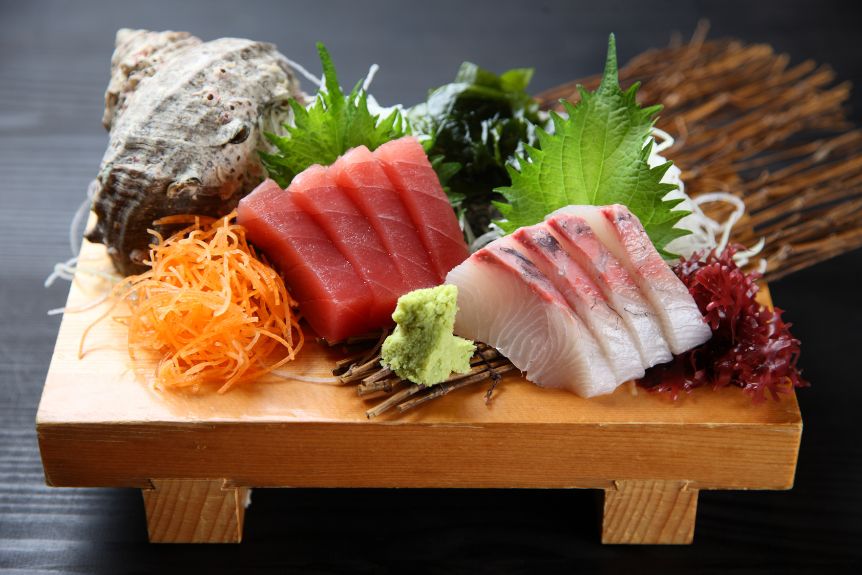

Popular Sushi Selections
While mastering the art of sashimi allows you to appreciate the purity of fish, exploring popular sushi selections introduces a dynamic world of flavors and textures. You’ll find that each type of sushi offers a unique experience, putting you in control of your culinary journey.
Dive into nigiri, a simple yet elegant choice. It’s your gateway to tasting the fish’s true essence, lightly pressed atop a bed of vinegared rice. You’re in charge here, deciding whether to add a hint of wasabi or a light soy sauce touch.
Don’t overlook maki rolls, where creativity meets tradition. You control the blend of textures and flavors, choosing from cucumber, avocado, or even tempura bits rolled together with rice and seaweed.
It’s a playful, customizable sushi form that caters to your preferences.
For those who command a bolder taste, temaki, or hand rolls, offer a hands-on experience. You dictate the fillings, embracing everything from spicy tuna to sweet, succulent eel, all wrapped in a crisp seaweed cone.
Savoring these popular sushi selections, you’re not just eating; you’re orchestrating a culinary symphony. Each choice reflects your taste and control, making every bite a personal masterpiece.
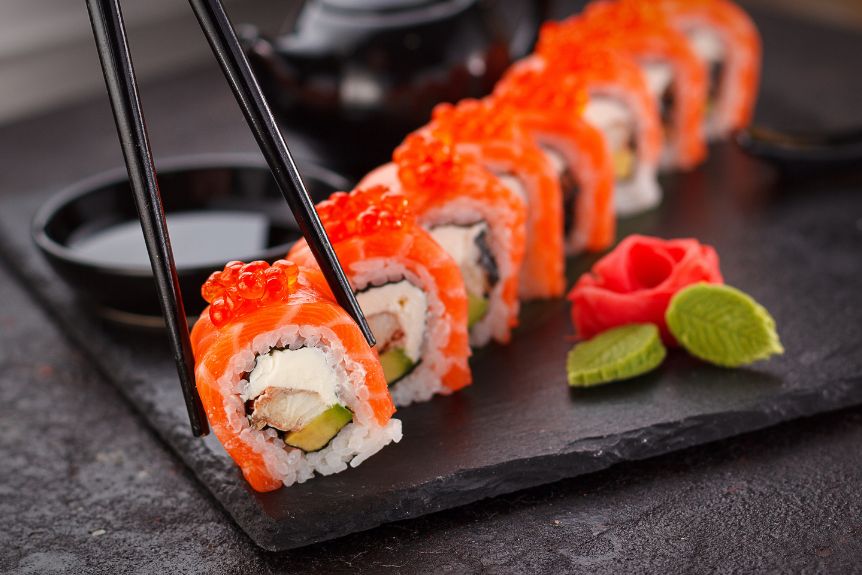

Grilled Fish Traditions
Venturing beyond raw delicacies, you’ll discover that Japan’s grilled fish traditions offer a savory exploration of taste and culture.
As you delve into these culinary practices, you gain control over an intricate aspect of Japanese cuisine that’s both satisfying and versatile.
Grilling fish, known as ‘Yakizakana’ in Japanese, isn’t just about cooking; it’s an art form where technique and precision are paramount. You’ll find that the type of fish, its size, and even the season play significant roles in how the fish is prepared and served.
For instance, mastering the art of grilling a whole fish, such as Ayu (sweetfish) or Sanma (Pacific saury), involves understanding the delicate balance between the heat source and the fish’s natural fats and oils. This ensures a crispy skin and moist, flavorful flesh.
Moreover, embracing these traditions allows you to experiment with various condiments and sides, like Daikon Oroshi (grated radish) and Ponzu (citrus-based sauce), enhancing the fish’s flavor and your dining experience.
By familiarizing yourself with these practices, you take command of a cooking method that celebrates the seasons, respects the ingredient, and enriches your culinary repertoire.
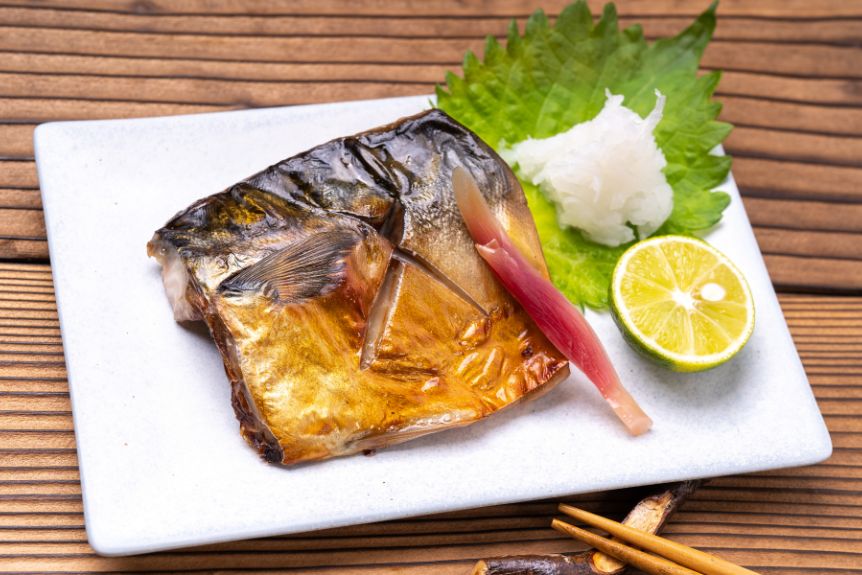

Regional Fish Delights
Have you ever wondered how the diversity of Japanese regions influences their unique fish dishes? Each area, with its specific climate and available resources, crafts a distinct culinary experience that you can take charge of exploring.
In Hokkaido, the cold waters are teeming with rich, fatty fish like salmon and herring. You’ll find these often grilled or in hearty stews, offering you a robust flavor and texture that’s second to none.
Moving down to the warmer waters of Kyushu, the variety shifts towards lighter, more delicate fare. Here, you can indulge in specialties like Seki Saba, a mackerel so fresh and tender, it practically melts in your mouth.
Don’t miss the chance to control your culinary journey by diving into the unique offerings of the Seto Inland Sea. Here, anago (saltwater eel) is a must-try, usually served over rice or within succulent sushi rolls. Its sweet, subtle flavor will leave you wanting more.
Japanese Fish Varieties Cooking Techniques
Diving into the art of Japanese cooking reveals a world of techniques that’ll transform your seafood dishes. Mastering these methods gives you the power to elevate the flavors and textures of fish, turning simple ingredients into culinary masterpieces.
Let’s break them down, so you can take charge in your kitchen.
First, there’s sashimi preparation, where precision is key. You’ll need to slice the fish thinly and evenly, enhancing its natural taste and delicate texture. This technique requires a sharp knife and a steady hand, but don’t worry, practice makes perfect.
Next, consider grilling, particularly with the robatayaki method. It’s all about control—managing the heat to ensure your fish is perfectly cooked, with a slight char on the outside and tender on the inside.
This method not only cooks the fish but also infuses it with a smoky flavor that’s hard to resist.
Lastly, there’s the art of simmering fish in a flavorful broth, known as nitsuke. It’s a slow, gentle process that imbues the fish with the rich flavors of soy sauce, sake, and sweet mirin.
Here, patience is your friend, as the slow cooking melds the flavors together, creating a dish that’s both comforting and sophisticated.
Conclusion
You’ve explored the diverse landscape of Japanese fish cuisine, from the intricate craft of sashimi to the irresistible flavors of grilled favorites.
Throughout your journey, you’ve not only encountered the well-known sushi choices but also unearthed the unique regional delicacies that elevate Japanese seafood to a global standard.
With the secrets of cooking methods revealed, you’re now ready to plunge further into this flavorful sea.
Remember, each dish tells a story, and you’re just beginning to uncover the delicious secrets of Japan’s aquatic bounty.
But perhaps you have a different perspective on Japanese fish varieties? Maybe you have a favorite dish that wasn’t mentioned, or a unique way of preparing seafood that you’d like to share?
We’d love to hear from you! Leave a comment below and let’s continue the conversation about the diverse and captivating world of Japanese fish cuisine.


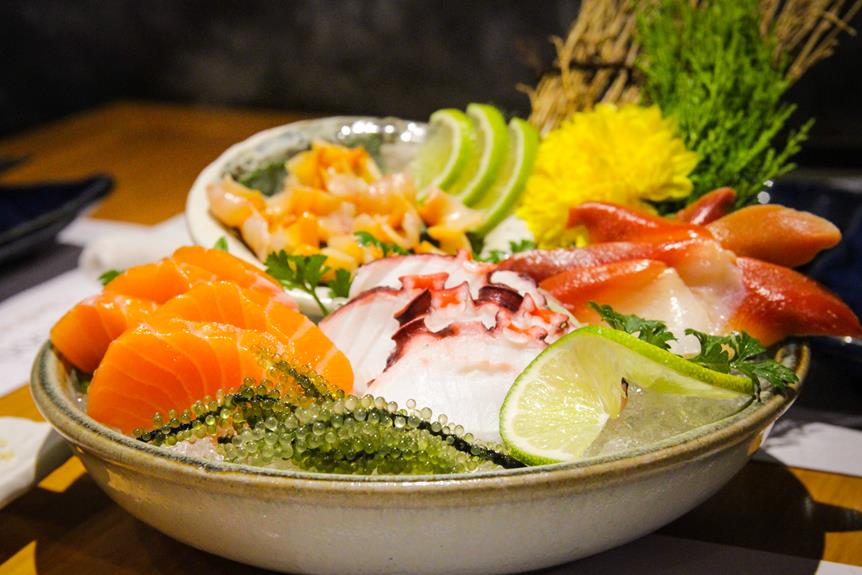

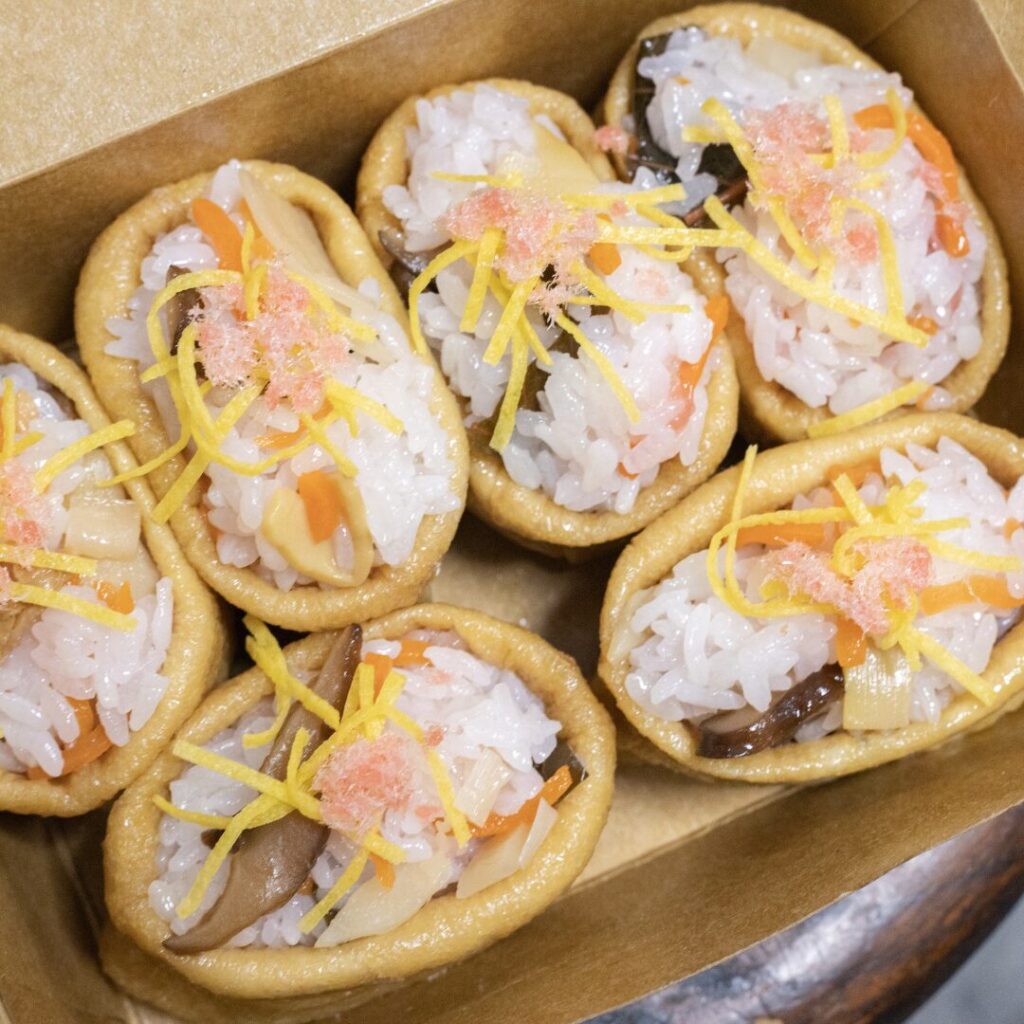


Konnichiwa! (Hello!) I'm Pat Tokuyama, a Japanese tofu cookbook author, who travels for music, food, and adventure. If you like Japanese tea, checkout some of the newestorganic japanese tea, matcha bowls and noren and more!
** Curious about the Plant Based Japanese Cooking Club? ** Learn more here!